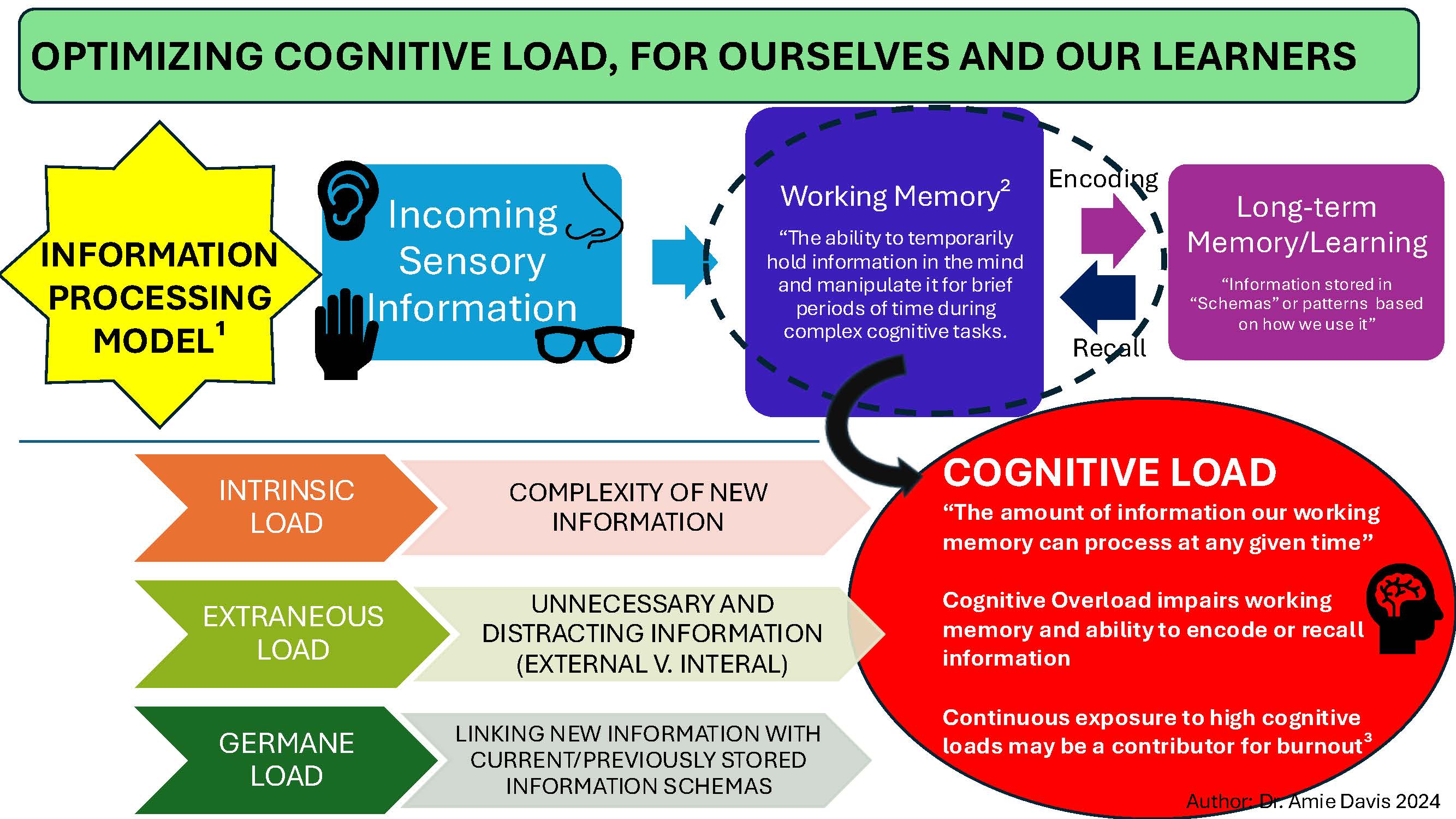Contributor: Amie Davis

1- DECREASE INTRINSIC LOAD – “COMPLEXITY OF NEW INFORMATION”
• Use a spiral curriculum where learners are introduced and re-introduced to increasingly complex topics and encounters
• Encourage continuity with patients over time (allowing familiarization with complexity)
• ”Chunk” or “Sort” encounter into smaller pieces (e.g. Sort information by system)
2. DECREASE EXTRANEOUS LOAD – “UNNECESSARY AND DISTRACTING INFORMATION”
• EXTERNAL EXTRANEOUS LOADS
Optimize learning environment: Decrease interruptions (pages, message alerts, voice interruptions) during a tasks. Ensure all equipment is available and ready including technology and charting equipment. Clearly mark/hold times for tasks that can be seen and respected by others
• INTERNAL EXTRANEOUS LOADS
Manage fatigue – Micro-breaks between tasks to allow re-focus, allow time for nutrition and “bio-breaks”, ensure adequate time held in the day for the tasks needed (so that can be present and not focused on “what comes next/feeling rushed”), wear clothing that is comfortable and adjustable to temperature throughout the day
3. INCREASE GERMANE LOAD – “LINKING NEW INFORMATION WITH CURRENT/PREVIOUSLY STORED INFORMATION SCHEMAS”
• Introduce learning aids (e.g. Mnemonics, rhymes, common links, pattern recognition)
• Link to similar previous presentations or patients seen in the past (also increases spiral learning)
• Use low-fidelity simulation to high fidelity (patient encounters) when possible (e.g. Practice first)
References:
1. Atkinson,R.C and Shiffrin, R.M.(1968). Human memory: A proposed system and its control processes. The psychology of learning and motivation Vol.2 (89-195)
2. Baddeley, A.D. Working Memory. Phil. Trans.R.Soc.Lond.B. Vol 302,311-324(1983)
3. Steven E Roskos, Laurie Fitzpatrick, Bengt Arnetz, Judy Arnetz, Shiva Shrotriya, Elizabeth Hengstebeck, Complex patients’ effect on family physicians: high cognitive load and negative emotional impact, Family Practice, Volume 38, Issue 4, August 2021, Pages 454–459,https://doi.org/10.1093/fampra/cmaa137